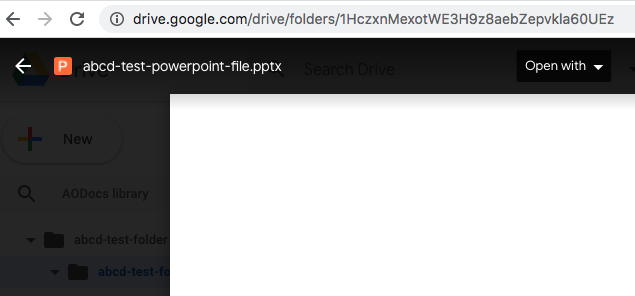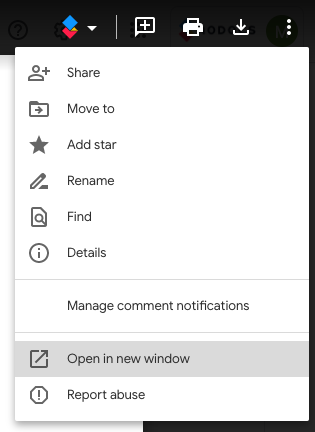Before creating AODocs documents: Create test Drive folder and files
In order to have some test files and folders to work with, open up your Google Drive and create a Drive folder. Upload or create some files beside it as well as inside it.
Here’s an example of what that might look like:


Folder ID
In Drive, files and folders are identified by their individual IDs. When the URL says something like /drive/folders/1HczxnMexotWE3H9z8aebZepvkla60UEzz, the long string of numbers and letters refers to the current Drive folder ID:


Make note of the Drive folder ID in the URL for later.
File ID
To get the URL to display the file ID of the file that’s currently open, click on the More options" menu (⁝), then on “Open in new window”:

Now the URL lists the Drive file ID (as opposed to folder ID):

⭑ Note: Certain Drive files such as Google Forms require an additional step of clicking on
Edit(pencil icon usually in the bottom right of the page) and open the file in yet another view. Only then does the URL display the proper file ID.
Make note of the Drive file ID: it and the AODocs document ID are the two most critical and commonly used pieces of identifying information in the AODocs API.
⭑ Note: If you’re familiar with the Drive API, the file ID is the ID of the File resource.
Next steps
Use a Drive file to create a new AODocs document with an attachment.